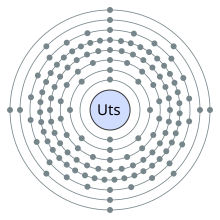Uts
 From Wikipedia (Zh) - Reading time: 8 min
From Wikipedia (Zh) - Reading time: 8 min
| |||||||||||||||||||||||||||||||||||||||||||||||||||||||||||||||||||||||||||||||||||||||||||||||||||||||||||||||||||||||||||||||||||||||||||||||||||||||||||||||||||||||||||||||||||||||||||||||||||||||||||||||||||||||||||||||||||||||||||||||||||||||||||||||||||||||||||||||||||||||||||||||||||||||||||||||||||||||||||||||||||||||
| 概況 | |||||||||||||||||||||||||||||||||||||||||||||||||||||||||||||||||||||||||||||||||||||||||||||||||||||||||||||||||||||||||||||||||||||||||||||||||||||||||||||||||||||||||||||||||||||||||||||||||||||||||||||||||||||||||||||||||||||||||||||||||||||||||||||||||||||||||||||||||||||||||||||||||||||||||||||||||||||||||||||||||||||||
|---|---|---|---|---|---|---|---|---|---|---|---|---|---|---|---|---|---|---|---|---|---|---|---|---|---|---|---|---|---|---|---|---|---|---|---|---|---|---|---|---|---|---|---|---|---|---|---|---|---|---|---|---|---|---|---|---|---|---|---|---|---|---|---|---|---|---|---|---|---|---|---|---|---|---|---|---|---|---|---|---|---|---|---|---|---|---|---|---|---|---|---|---|---|---|---|---|---|---|---|---|---|---|---|---|---|---|---|---|---|---|---|---|---|---|---|---|---|---|---|---|---|---|---|---|---|---|---|---|---|---|---|---|---|---|---|---|---|---|---|---|---|---|---|---|---|---|---|---|---|---|---|---|---|---|---|---|---|---|---|---|---|---|---|---|---|---|---|---|---|---|---|---|---|---|---|---|---|---|---|---|---|---|---|---|---|---|---|---|---|---|---|---|---|---|---|---|---|---|---|---|---|---|---|---|---|---|---|---|---|---|---|---|---|---|---|---|---|---|---|---|---|---|---|---|---|---|---|---|---|---|---|---|---|---|---|---|---|---|---|---|---|---|---|---|---|---|---|---|---|---|---|---|---|---|---|---|---|---|---|---|---|---|---|---|---|---|---|---|---|---|---|---|---|---|---|---|---|---|---|---|---|---|---|---|---|---|---|---|---|---|---|---|---|---|---|---|---|---|---|---|---|---|---|---|---|---|---|---|---|---|---|---|---|---|---|---|---|---|---|---|---|---|---|---|---|---|---|
| 名稱·符號·序數 | Untriseptium·Uts·137 | ||||||||||||||||||||||||||||||||||||||||||||||||||||||||||||||||||||||||||||||||||||||||||||||||||||||||||||||||||||||||||||||||||||||||||||||||||||||||||||||||||||||||||||||||||||||||||||||||||||||||||||||||||||||||||||||||||||||||||||||||||||||||||||||||||||||||||||||||||||||||||||||||||||||||||||||||||||||||||||||||||||||
| 元素類別 | 未知 可能為超錒系元素 | ||||||||||||||||||||||||||||||||||||||||||||||||||||||||||||||||||||||||||||||||||||||||||||||||||||||||||||||||||||||||||||||||||||||||||||||||||||||||||||||||||||||||||||||||||||||||||||||||||||||||||||||||||||||||||||||||||||||||||||||||||||||||||||||||||||||||||||||||||||||||||||||||||||||||||||||||||||||||||||||||||||||
| 族·週期·區 | 不適用·8·g | ||||||||||||||||||||||||||||||||||||||||||||||||||||||||||||||||||||||||||||||||||||||||||||||||||||||||||||||||||||||||||||||||||||||||||||||||||||||||||||||||||||||||||||||||||||||||||||||||||||||||||||||||||||||||||||||||||||||||||||||||||||||||||||||||||||||||||||||||||||||||||||||||||||||||||||||||||||||||||||||||||||||
| 標準原子質量 | 未知 | ||||||||||||||||||||||||||||||||||||||||||||||||||||||||||||||||||||||||||||||||||||||||||||||||||||||||||||||||||||||||||||||||||||||||||||||||||||||||||||||||||||||||||||||||||||||||||||||||||||||||||||||||||||||||||||||||||||||||||||||||||||||||||||||||||||||||||||||||||||||||||||||||||||||||||||||||||||||||||||||||||||||
| 电子排布 | [Og] 5g11 6f4 8s2 8p2 1/2(推測)[3][4] 2, 8, 18, 32, 43, 22, 8, 4(推測) | ||||||||||||||||||||||||||||||||||||||||||||||||||||||||||||||||||||||||||||||||||||||||||||||||||||||||||||||||||||||||||||||||||||||||||||||||||||||||||||||||||||||||||||||||||||||||||||||||||||||||||||||||||||||||||||||||||||||||||||||||||||||||||||||||||||||||||||||||||||||||||||||||||||||||||||||||||||||||||||||||||||||
| 物理性質 | |||||||||||||||||||||||||||||||||||||||||||||||||||||||||||||||||||||||||||||||||||||||||||||||||||||||||||||||||||||||||||||||||||||||||||||||||||||||||||||||||||||||||||||||||||||||||||||||||||||||||||||||||||||||||||||||||||||||||||||||||||||||||||||||||||||||||||||||||||||||||||||||||||||||||||||||||||||||||||||||||||||||
| 原子性質 | |||||||||||||||||||||||||||||||||||||||||||||||||||||||||||||||||||||||||||||||||||||||||||||||||||||||||||||||||||||||||||||||||||||||||||||||||||||||||||||||||||||||||||||||||||||||||||||||||||||||||||||||||||||||||||||||||||||||||||||||||||||||||||||||||||||||||||||||||||||||||||||||||||||||||||||||||||||||||||||||||||||||
| 氧化态 | 根據5g元素預測 可能具有+6氧化態[5] | ||||||||||||||||||||||||||||||||||||||||||||||||||||||||||||||||||||||||||||||||||||||||||||||||||||||||||||||||||||||||||||||||||||||||||||||||||||||||||||||||||||||||||||||||||||||||||||||||||||||||||||||||||||||||||||||||||||||||||||||||||||||||||||||||||||||||||||||||||||||||||||||||||||||||||||||||||||||||||||||||||||||
| 电离能 | |||||||||||||||||||||||||||||||||||||||||||||||||||||||||||||||||||||||||||||||||||||||||||||||||||||||||||||||||||||||||||||||||||||||||||||||||||||||||||||||||||||||||||||||||||||||||||||||||||||||||||||||||||||||||||||||||||||||||||||||||||||||||||||||||||||||||||||||||||||||||||||||||||||||||||||||||||||||||||||||||||||||
| 雜項 | |||||||||||||||||||||||||||||||||||||||||||||||||||||||||||||||||||||||||||||||||||||||||||||||||||||||||||||||||||||||||||||||||||||||||||||||||||||||||||||||||||||||||||||||||||||||||||||||||||||||||||||||||||||||||||||||||||||||||||||||||||||||||||||||||||||||||||||||||||||||||||||||||||||||||||||||||||||||||||||||||||||||
| CAS号 | 55127-57-6 [6] | ||||||||||||||||||||||||||||||||||||||||||||||||||||||||||||||||||||||||||||||||||||||||||||||||||||||||||||||||||||||||||||||||||||||||||||||||||||||||||||||||||||||||||||||||||||||||||||||||||||||||||||||||||||||||||||||||||||||||||||||||||||||||||||||||||||||||||||||||||||||||||||||||||||||||||||||||||||||||||||||||||||||
| 同位素 | |||||||||||||||||||||||||||||||||||||||||||||||||||||||||||||||||||||||||||||||||||||||||||||||||||||||||||||||||||||||||||||||||||||||||||||||||||||||||||||||||||||||||||||||||||||||||||||||||||||||||||||||||||||||||||||||||||||||||||||||||||||||||||||||||||||||||||||||||||||||||||||||||||||||||||||||||||||||||||||||||||||||
| 主条目:Uts的同位素 | |||||||||||||||||||||||||||||||||||||||||||||||||||||||||||||||||||||||||||||||||||||||||||||||||||||||||||||||||||||||||||||||||||||||||||||||||||||||||||||||||||||||||||||||||||||||||||||||||||||||||||||||||||||||||||||||||||||||||||||||||||||||||||||||||||||||||||||||||||||||||||||||||||||||||||||||||||||||||||||||||||||||

1/2)[3],對應的殼層為:2, 8, 18, 32, 43, 22, 8, 4。
Untriseptium(化學符號為Uts)是一種尚未被發現的化學元素,原子序數是137。直到这个元素被发现、确认并确定了永久名称之前,Untriseptium和Uts分别为这个元素的暫定系统命名和化学符号。根據皮寇模型[8],其在扩展元素周期表中排列在第8週期,预测是屬於g區的超锕系元素。
有關Uts的研究多半是在討論週期表可能的終點[2][9],1948年時,理查德·費曼指出了現有理論在137號元素之後可能出現的悖論[10],也因此在部分非正式場合中會以費曼的名字稱這個元素為「Feynmanium」[11]。
目前尚未有人成功合成Uts,也無法確定其原子核是否能夠存在,因為原子核滴线的不穩定性可能意味著周期表將在穩定島後不遠之處結束[12][13]。根據現有理論,僅能確定其不會存在任何穩定的同位素[7]。
命名
[编辑]Untriseptium一詞來自於1979年IUPAC發表了對元素新命名的建議[14][15],該建議將元素以原子序數在十進位制的數字以拉丁文組合做為命名[16],其中字首「Un-」代表1,表示原子序的百位數、字根「tri-」代表3,表示原子序的十位數、字根「septi-」代表7,表示原子序的個位數[17]、字尾「-ium」表示金屬元素[18]。而費曼指出了原子序大於137的元素會出現的悖論,並認為137號元素可能是最後一個存在的元素,也因此在非正式場合中,該元素也被稱為「Feynmanium」[10],名稱來自於費曼的名字[11]。
由於扩展元素周期表的排列方式並無統一,因此在皮寇模型提出以及軌域模型普及之前,週期表無考慮到軌域能階問題時,是直接照著排列下去的,而其中一種排法Uts正好是在𬭊的下方,也因此有些網站會將「eka-dubnium」也記載為Uts的別名,意為𬭊的下方的元素[19],而根據皮寇模型,𬭊下方應為159號元素(Unpentennium,Upe)[20]。然而根據該模型預測Uts的電子排佈方式[21],其應屬於g區元素,而g區元素從第8周期開始,因此Uts在週期表中位置的上方是沒有元素的。
特徵
[编辑]由於許多原子核理論的模型在原子序到137之後都會出現問題、矛盾或存在悖論,因此理論上,Uts可能為最後一個存在的元素。這些現象最早由理查德·費曼於1948年指出[22]。
玻爾模型
[编辑]理查德·費曼指出,根據玻爾模型,原子序大於137的元素,其內層軌域可能電子無法穩定存在[23],因爲在1s原子軌域中的電子的速度v計算如下:
當中Z是原子序,α是描述電磁力強度的精細結構常數。[24]在這個計算中,任何原子序高於137的元素的1s軌域電子速度計算結果會比光速c還大[25][26],因此任何不建基於相對論的理論(如波爾模型)不足以處理這種計算。
對於任意高的p,我們可以找到滿足該等式的v < c。且電子的速度與原子核存在與否無關,因此此計算矛盾並不意味著Uts會是元素週期表上的最後一個元素[2]。
相對論狄拉克方程
[编辑]其中,m為電子靜止質量、c為光速、z為質子數、α為精細結構常數。
當質子數為138或更大時,根號中將會出現負值,導致其值不是實數,因而導致狄拉克基態的波函數是震蕩的,並且正能譜與負能譜之間沒有間隙,正如克萊因悖論所言[28]。
参见
[编辑]註解
[编辑]參考文獻
[编辑]- ^ Emsley, John. Nature's Building Blocks: An A-Z Guide to the Elements New. New York, NY: Oxford University Press. 2011: 588. ISBN 978-0-19-960563-7.
- ^ 2.0 2.1 2.2 Philip Ball. Would element 137 really spell the end of the periodic table? Philip Ball examines the evidence. Chemistry World. Royal Society of Chemistry. 2010-11 [2012-09-30]. (原始内容存档于2012-10-21).
- ^ 3.0 3.1 Pyykkö, Pekka. A suggested periodic table up to Z ≤ 172, based on Dirac–Fock calculations on atoms and ions. Phys. Chem. Chem. Phys. 2011, 13 (1): 161–168. Bibcode:2011PCCP...13..161P. ISSN 1463-9076. doi:10.1039/C0CP01575J (英语).
- ^ Makhyoun, M. A. On the electronic structure of 5g1 complexes of element 125 : a quasi-relativistic MS-Χα Study. Journal de Chimie Physique. 1988, 85: 917–924 [2021-04-25]. ISSN 0021-7689. doi:10.1051/jcp/1988850917. (原始内容存档于2018-06-03) (英语).
- ^ Fricke, B.; Greiner, W.; Waber, J. T. The continuation of the periodic table up to Z = 172. The chemistry of superheavy elements. Theoretica Chimica Acta. 1971-09-XX, 21 (3): 235–260. ISSN 0040-5744. doi:10.1007/BF01172015 (英语).
- ^ Untriseptium. CharChem. [2021-04-25]. (原始内容存档于2021-05-15).
- ^ 7.0 7.1 Untriseptium. University of Kentucky. [2021-04-25]. (原始内容存档于2021-04-25).
- ^ Schwerdtfeger, Peter; Pyykkö, Pekka. [Abteilungsexemplar] Relativistic electronic structure theory: : (dedicated to Pekka Pyykkö on the occation of his 60th birthday). Theoretical and computational chemistry 1. ed. Amsterdam [u.a.]: Elsevier. 2002 [2021-04-25]. ISBN 978-0-444-51249-9. (原始内容存档于2021-04-26) (英语).
- ^ Goswami, M. Ultimate stable element Z = 137. Indian Journal of Science and Technology. 2009-03-20, 2 (3): 1–4 [2021-04-25]. doi:10.17485/ijst/2009/v2i3.10. (原始内容存档于2021-04-28).
- ^ 10.0 10.1 Elert, Glenn. Atomic Models. The Physics Hypertextbook. [2021-04-25]. (原始内容存档于2021-02-28) (英语).
- ^ 11.0 11.1 J. Eric Slone. The Mysterious 137. fotuva.org. [2017-07-17]. (原始内容存档于2017-07-24).
- ^ transuranium element. Encyclopedia Britannica. [2021-04-25]. (原始内容存档于2021-06-09) (英语).
- ^ Ćwiok, S.; Heenen, P.-H.; Nazarewicz, W. Shape coexistence and triaxiality in the superheavy nuclei. Nature. 2005-02-XX, 433 (7027): 705–709 [2021-04-25]. Bibcode:2005Natur.433..705C. ISSN 0028-0836. PMID 15716943. doi:10.1038/nature03336. (原始内容存档于2021-04-15) (英语).
- ^ Recommendations for the Naming of Elements of Atomic Numbers Greater than 100. Pure and Applied Chemistry. 1979-01-01, 51 (2): 381–384 [2021-04-25]. ISSN 1365-3075. doi:10.1351/pac197951020381. (原始内容存档于2021-04-26).
- ^ Untriseptium. apsidium.com. 2002-09-19 [2017-07-18]. (原始内容存档于2002-09-23).
- ^ Meija, Juris. Symbols of the Elements (part III). Chemistry International (DeGruyter). 2014, 36 (4): 25–26. doi:10.1515/ci.2014.36.4.25.
- ^ 137 the Cosmic Code written by the ‘hand of God’. wordpress.com. [2017-07-18]. (原始内容存档于2022-03-27).
- ^ How to Name New Chemical Elements. Chemistry International. 2016-01-01, 38 (1) [2021-04-25]. ISSN 1365-2192. doi:10.1515/ci-2016-0124. (原始内容存档于2021-04-28).
- ^ Untriseptium – Eka-dubnium/Element 137. elixirofknowledge.com. 2015-07-15 [2017-07-18]. (原始内容存档于2021-04-15).
- ^ Extended elements: new periodic table. 2010 [2017-07-17]. (原始内容存档于2016-03-04).
- ^ Fricke, Burkhard. Superheavy elements a prediction of their chemical and physical properties. Recent Impact of Physics on Inorganic Chemistry 21. Berlin, Heidelberg: Springer Berlin Heidelberg. 1975: 89–144. ISBN 978-3-540-07109-9. doi:10.1007/bfb0116498 (英语).
- ^ Eggenkamp, Hans. The Halogen Elements. The Geochemistry of Stable Chlorine and Bromine Isotopes. Berlin, Heidelberg: Springer Berlin Heidelberg. 2014: 3–13. ISBN 978-3-642-28505-9. doi:10.1007/978-3-642-28506-6_1 (英语).
- ^ Philip Ball. how many more chemical elements are there for us to find?. BBC. 2016-01-15 [2017-07-18]. (原始内容存档于2021-08-16).
- ^ Eisberg, R.; Resnick, R.; Sullivan, Jeremiah D. Quantum Physics of Atoms, Molecules, Solids, Nuclei and Particles. Physics Today. 1975-12-XX, 28 (12): 51–52 [2021-04-25]. ISSN 0031-9228. doi:10.1063/1.3069243. (原始内容存档于2017-12-21) (英语).
- ^ When Will We Reach the End of the Periodic Table?. smithsonian. [2017-07-18]. (原始内容存档于2022-03-24).
- ^ Sam Kean. ununseptium ugly name beautiful element. slate.com. 2010-08-09 [2017-07-18]. (原始内容存档于2021-06-14).
Einstein's theory of relativity says nothing can go faster than light. If you do the math, electrons could suddenly violate the laws of relativity around element 137, untriseptium
- ^ Okun, Lev B. The Concept of Mass. Physics Today. 1989-06-XX, 42 (6): 31–36 [2021-04-25]. Bibcode:1989PhT....42f..31O. ISSN 0031-9228. doi:10.1063/1.881171. (原始内容存档于2021-05-05) (英语).
- ^ Greiner, Walter. Relativistic Quantum Mechanics. Berlin, Heidelberg: Springer Berlin Heidelberg. 1995. ISBN 978-3-540-99535-7. doi:10.1007/978-3-642-88082-7 (英语).
 KSF
KSF



